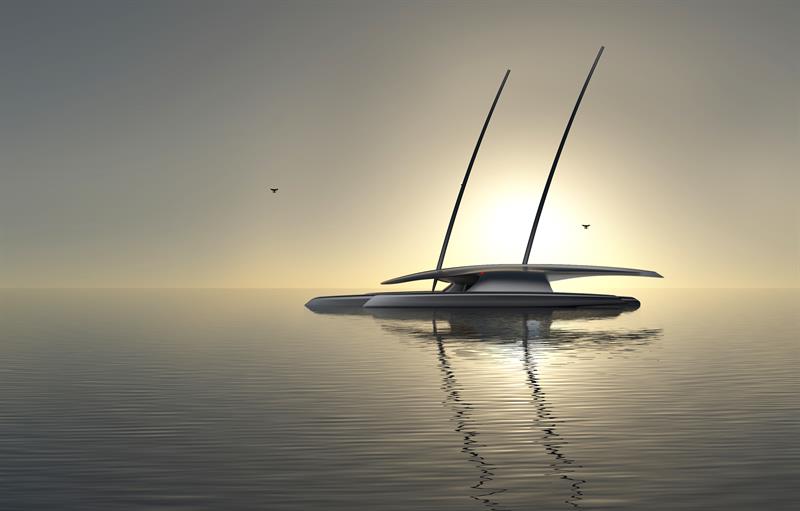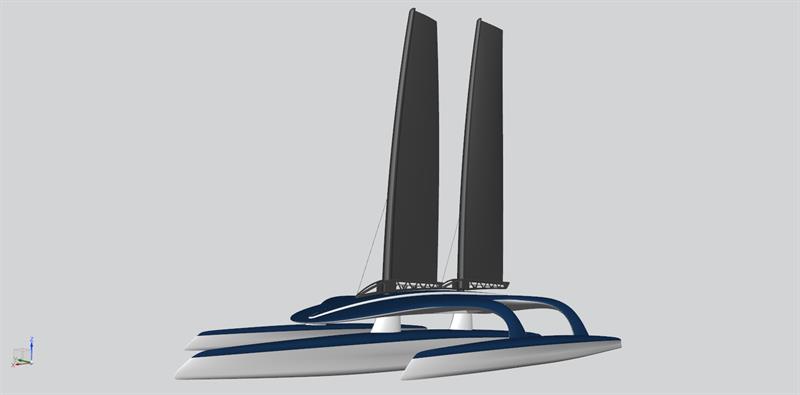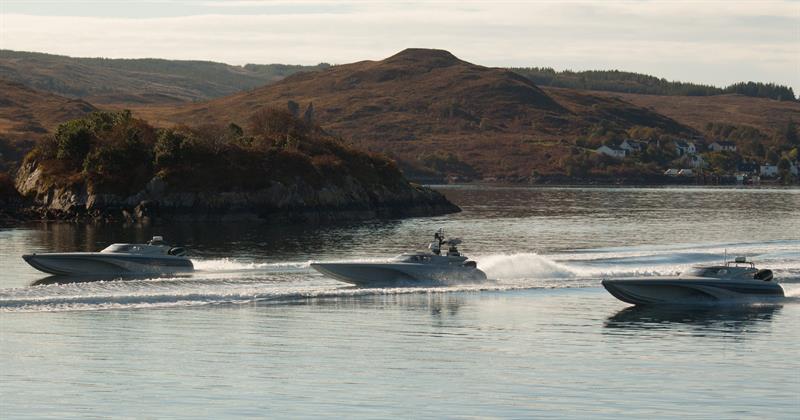Depending on your view of how the American presidential race was run and resolved, and how this reflects on humankind’s principal superpower, you may think the Pilgrim Fathers have got a lot to answer for. But if you accept that its politicians do not fairly reflect what is best in America, as is true in many other cases all around the globe after all, then the anniversary of the Pilgrim Father’s arrival is worthy of celebration.
In 2020 it will be 400 years since the Mayflower made its epic journey from Europe to America carrying 102 settlers, half of which wouldn’t survive the first New England winter. The remainder are credited, symbolically at least, with populating what has become the world’s most influential nation and presumably these descendants will already be working on the fireworks display to end all fireworks displays to recognise the event.
On this side of the Atlantic, a team from Plymouth have come up with its own celebratory project, the Mayflower Autonomous Ship. Despite claims from Cornwall, Plymouth is generally regarded as the last stopping place in England before reaching America and so the city takes its Pilgrim Fathers responsibilities seriously.
When discussing how to commemorate the notion of a replica was dismissed. There are several Mayflowers, most significantly perhaps the full scale version that was built in 1956 and sailed that year from Plymouth, Devon, to Plymouth, Massachusetts, where it normally resides as a museum and tourist attraction. It is currently undergoing a refurb in advance of the 2020 celebrations.
Instead, Brett Phaneuf, managing director at MSubs, suggested a more radical approach. Taking into account the Government’s drive towards high value and specialised technologies, like robotics, Phaneuf suggested the building of a 21st Century Mayflower.
Paddy Dowsett said: “What Brett proposed was something that’s captures the pioneering spirit of the original Pilgrim Fathers but actually it looks forward and acts as a totemic project for establishing the West Country as a cluster or hotspot for maritime autonomous development.” Dowsett also works for MSubs and is project manager on the Mayflower Autonomous Ship project.
The idea of the project is to design, build and sail the world's first full-sized, fully autonomous unmanned ship across the Atlantic. It is not just intended as a celebration of the Mayflower’s original journey, it is also testing technology that may enable further development of autonomous ships, and it will additionally function as a research vessel both during its trans-Atlantic jaunt and in its deployment thereafter.
Even before considering the technical issues, one major obstacle at the moment is that such a vessel may not be legal. “Interestingly, the high seas from a legislative perspective are actually quite complicated, because they don’t belong to anyone,” explained Dowsett. “So in the simplest terms, once you’ve crossed a country’s territorial limit [normally within 12 miles], whether that’s in the air or the seas, the law of that particular land applies.And so it’s relatively easy to regulate. When you’re on the high seas, it’s really down to a series of United Nations conventions and some countries have embraced those conventions and put them into the law, some haven’t.”
Dowsett added: “The regulatory framework is not yet geared up and particularly it wasn’t when that decision was taken to support an autonomous vessel. Now interestingly, almost serendipitously, we think the regulations will change in about 2020 because autonomous vessels are coming, and they’re coming quite rapidly over the next three to five years.”

Project partners
MSubs makes autonomous underwater vessels and is one of three principal partners, the other two being Plymouth University and Promare, and all three are joint and equal financial contributors. Plymouth University’s renowned marine science department also provides research students, testing facilities and expertise in terms of the scientific equipment that will be on board. Promare is a non-profit corporation and public charity that promotes marine research and exploration throughout the world.
Design is in the hands of Shuttleworth Design, the yacht designer. John and Orion Shuttleworth are the father and son team at the helm of this side of the project. Orion commented: "Our approach to developing the concept was to fully explore and take advantage of the opportunities that arise from not having to carry crew, and to create a vessel that is capable of using only renewable energy. Working within the limitations of renewable energy sources has given a clear direction to the developing form of the vessel.”
Dowsett did add that it is likely that a small diesel engine will be included to motor the vessel at a rate of 5knots to an area of sun or wind.
"A trimaran was chosen because it provides the most efficient hull form for low speed motoring,” continued Shuttleworth. “The hull configuration developed from a requirement to reduce windage, while keeping the solar array sufficiently high above the water to reduce wave impact. Without the need for accommodation, the centre hull has been kept low to the water and the wings and deck are separated and raised above on struts. This allows waves to break through the vessel and significantly reduces roll induced by wave impact. The outer hulls are designed to skim the water reducing resistance by 8%.
"The two masted soft sail rig will enable a top speed of around 20 knots. Each sail is simply controlled by a single sheet, and can furl into the boom and allow multiple reefing configurations for varying wind speeds. Stowing the sails while motoring reduces windage and eliminates shadows cast over the solar cells on the deck, while allowing the masts to stay standing to carry navigation lights."
Dowsett believes the sailing rig is going to be the most challenging aspect. “Controlling the sails is what makes it exciting, I don’t think anyone else is doing that at the moment. If it’s a sailing vessel you’re going to have to have winches to bring in the sails, depending on what angle you are to the wind, so our system needs to minimise the amount of moving parts associated with the sailing rig and then control the winches autonomously.”
With batteries filling the rig, another issue, and one that remains to be resolved, is whether or not to have the propeller shaft that these batteries drive permanently in the water. Under sail power this propeller provides unwanted drag, but it may be a necessary evil when the alternative is to have a mechanism to raise and lower as needed – it is potentially something to go wrong and if it did could leave the vessel stranded. The other consideration is that the batteries could be recharged when using sail power, either by reversing the direction of the propeller and allowing it to act as a generator, or by having a separate generation device.
“A number of yachting companies are incorporating these technologies now, but none of them are quite man enough for the vessel we’re looking to build,” commented Dowsett. “As we build submarines, we have our own in-house experts on the batteries and power management and we’re doing some interesting calculations at the moment, working out the size of the propeller and what sort of power it would generate, versus the drag it causes and impact on the speed.”
This is the end of Phase three of the design – a stage when MSubs and Shuttleworth are addressing these propulsion issues and also such aspects as how to make best use of the space available on the inner ship for such things as the navigation equipment and the payload of research devices.
The first model is now being built and tank testing should be conducted in the spring of 2017. Following that phase the consortium will take the design for the full 32m, carbon fibre craft to a boat builder with a view to having the vessel ready for a year of trials in 2019, so she is fully prepared for being the star of the show in 2020.
But her duties will not be over after the Atlantic crossing, as Dowsett described: “The technology that will safely take the Mayflower from Plymouth to Massachusetts is the same as could be used for what we could call white van driver type tasks - supporting oil rigs, fish farms, offshore energy farms, applications that really do lend themselves to autonomous operations.”
The Mayflower autonomous ship is designed as a climatic and oceanographic research vessel with cargo bays to launch and recover underwater autonomous vehicles and sensors, and she’ll be fitted with sonar and the ability to tow such devices as a plankton recorder and devices that will record sea temperature and salinity.
“Once she’s crossed the Atlantic,” concluded Dowsett, “we are looking at sending her round the world, providing the Atlantic crossing goes well, and thereafter she’ll be available for charter. A lot of the exploration and climatic research is taking place in the polar regions, the inhospitable regions of the world. Of course, the great thing about autonomous vessels, is she can stay on station for three months, six months, depending on wind and solar conditions, without the need to replenish a crew, just send in the data. That is what she’s been designed to do after she’s taken part in the Mayflower 400.”
Fact file Length Overall - 32.5m Beam - 16.8m Draft - 0.875 m (1.78 m to tip of rudder) Sail Area - 159 m2 Hull Construction Composite (Glass/Aramid/Foam) Deck Construction Composite (Carbon/Nomex) Speed Max Electric Motoring - 12.5 knots Speed Max Sailing - 20 knots Range at 5 knots Electric Motoring - Unlimited
|
Unmanned Warrior MAST (Maritime Autonomy Surface Testbed) is an unmanned surface vessel (USV) system, developed by ASV Unmanned Marine Systems under Dstl (Defence Science and Technology Laboratory) funding and based on the 35ft-long Bladerunner 35 powerboat. The craft is capable of speeds of 60knots and can be operated with various levels of autonomy, from being helmed by a human operator to fully autonomous navigation. The USV recently took part in the Royal Navy’s Unmanned Warrior event in October, during which it was used to autonomously track and intercept enemy boats and block their attempted attacks against larger ships. The vehicle uses a combination of a 360° camera, Automatic Identification System, radar and GPS. By taking real-time measurements with these sensors and fusing them with chart information it can detect objects to avoid and plan a safe route through the water at high speeds while also complying to regulations governing collision avoidance at sea.
|







